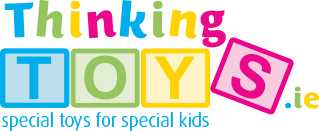Purchase Now
Developing Dressing Skills
Dressing Skills:
- Getting dressed is an important activity in a child’s daily life. Teaching your child how to get dressed by themselves can be very rewarding.
- Getting dressed requires Motor Planning, Fine Motor Skills, Gross Motor Skills, Spatial Awareness and Cognitive Skills such as Sequencing and Problem-Solving.
- Getting dressed can be frustrating for any child, but can be even more frustrating for a child with a disability.
- Getting dressed on your own can be beneficial to the child in many ways:
1. Building up Strength
2. Range of Motion
3. Coordination
4. Memory
5. Sequencing
6. Spatial Awareness
7. Body Awareness
Ways To Learn Dressing Skills:
1. Backward Chaining:
- Here the adult begins the task, with the child finishing the last step.
- Gradually the adult does less and less as the child is able to do more of the task by themselves.
- This way the child always gets the reward of finishing the task, e.g. the adult puts the T-shirt over the child’s head and helps them to get their arms through the holes. The child then pulls down the t-shirt at the front.
- Once they have mastered the last step (pulling the shirt down), teach them the second last step (putting it over their head) etc.
2. Forward Chaining:
- This is when the child starts the task (e.g., putting the T-shirt over their head), and the adult helps with the later stages the child needs help with (e.g., putting their arms through the sleeves).
- Once the child has mastered the the first step, you teach them the second step and move forward with the steps.
3. Steps to Ensure Clothes Are The Correct Way Round:
- Wear t-shirts, sweat shirts, pants etc with a picture on the front. Point the picture out to the child.
- Identify the back of all garments through having a label or using coloured thread. Encourage the child to find this label to identify the back of their clothing.
- Lay clothes out flat in front of the child in the order that they are going to be put on. Place the end which is going to be put on first, nearest to your child.
